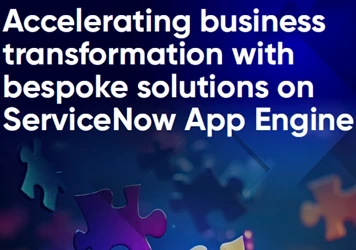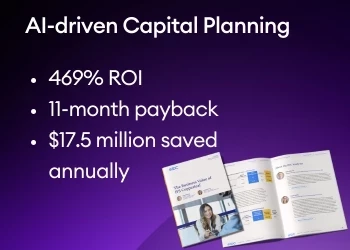The one thing you must have for Digital Transformation
Add bookmarkThe term ‘Digital Transformation’ has taken a prominent place in today’s business vocabulary. It’s on the lips of virtually every IT vendor, most management consultants and an increasing number of executives and middle managers.
Some of the buzz around digital transformation has substance. Some is just plain hype. It has been clear for some time that the combination of Social and Mobile technologies, Analytics & big data and the Cloud – popularly known by the acronym SMAC – represent powerful forces that will shape the nature of competition in the foreseeable future. This trend is being further accelerated by the evolution of cognitive computing, machine learning and robotics. Yet there are still a lot of misconceptions around digital transformation. Digital transformation occurs when businesses are focused on integrating digital technologies, to transform how their businesses create value for customers. If there’s not a clear emphasis on customer value creation it’s not transformation. If the effort is simply focused on applying IT tools to the same business model – it’s not transformation. If the initiative is largely around cost reduction – in the context of the existing business model – then it is not really digital transformation.
There is good reason to consider jumping on the digital transformation bandwagon. The pace of change today is astounding. According to research conducted by Singularity University, the average half-life of a business competency dropped from 30 years in 1984, to a low of 5 years in 2014. Equally noteworthy is that nearly 90% of the Fortune 500 companies which were listed in 1955 were no longer on the list in 2014 and the average life of an S&P company has decreased from 67 years to 15 years. Perhaps even more significant is the prediction by the authors of Exponential Organizations that as many as 40% of the companies listed on the S&P 500 in 2014 will cease to exist by 2024.
A new breed of upstart organizations are orders of magnitude faster and better than traditional firms – these are the so called 'exponential organizations' that deploy digital technologies in a new and novel way. These companies have demonstrated the ability to reach a market cap of a billion dollars much faster than the typical Fortune 500 Company or even Google for that matter and include firms such as Facebook, Tesla, Uber and WhatsApp.
The cumulative effect of digital technologies, exponential organizations, and external threats means that more traditional organizations will have to change the way they do business to compete in the evolving environment. That’s why it will become increasingly important for companies to focus on large scale change.
As a 2015 MIT Sloan Management Review global study found, 'strategy, not technology, drives digital transformation.' Successful companies understood the importance of integrating digital technologies such as social, mobile, analytics, big data, the cloud and even cognitive computing in transforming how their business operated – while less advanced firms stressed solving discrete business problems using individual technologies.
Having a transformative purpose or vision and a process based view is recognized as being important. In Leading Digital, the authors found that firms with a strong vision and mature processes for digital transformation were more profitable on average, had higher revenues, and achieved a bigger market valuation than competitors without a strong vision. Yet more reason to emphasize that while technology is integral to digital transformation - it can’t just be about technology. In the early days of the research on digital transformation, it was recommended that true digital transformation at the enterprise level needs to embrace fundamental change is three areas: customer experience, operational processes, and business models.
Process maturity is central to success in each of these three areas. Improving performance for customers requires a focus on the value creating business processes. Redesigning business models also demands sophistication in process thinking and improving operational processes requires the maturity needed to link performance in front and back office processes.
The fastest and arguably the most effective way of drawing attention to performance problems is to measure what matters to customers. This typically involves metrics around the timeliness and quality of the products and services provided – and these set the stage for viewing the business in the context of the value creating, cross functional business processes. Don’t underestimate the needed shift in management attention that this involves as most companies still tend to focus on financial measure of performance and place insufficient emphasis on critical to customer metrics such as perfect order performance, variance to promise and responsiveness. Process mature organizations will appreciate this and use metrics to drive improvement action.
Integrating various technologies is arguably the single most important factor in driving success with digital business. This requires viewing the business in the context of enterprise level business processes – and a high level of process maturity.
































